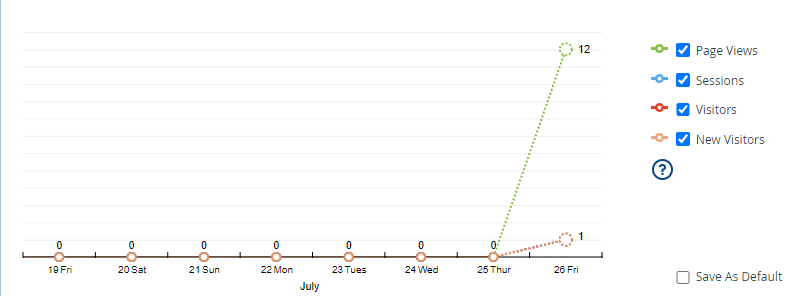THE RISK OF VIOLENT BEHAVIOR : A CASE STUDY
DOI:
https://doi.org/10.32938/jsk.v3i02.1376Keywords:
nursing care; the risk of violent behaviorAbstract
Background: Risk Violent behavior is an individual condition that will endanger oneself, others, family and society. Individuals at risk of violent behavior need psychiatric nursing care to overcome the nursing problems they experience. This study aims to discuss nursing care comprehensively from assessment to evaluation of clients at risk of violent behavior.
Case report: The results of the client have a history of traffic accidents and experienced a collision in the head area but at the request of the family, surgery was carried out. After the accident, the family got changes in the client, namely irritability, tantrums, talking and smiling by themselves and seeing things that were not tangible. The implementation of nursing is given to clients in the form of physical exercises: deep breaths and hitting the pillow mattress, assertive exercises and spiritual exercises. The client's family is given nursing education about how to care for the client. The nursing evaluation found that the client was able to do physical exercise and assertive exercise. Families can recognize problems and motivate clients to do the exercises that have been taught by the nurse.
Conclusion: The risk of violent behavior is one of the mental nursing problems that can be found in clients with mental disorders with a history of head trauma.
References
Adejumo, A. O., Ikoba, N. A., Suleiman, E. A., Okagbue, H. I., Oguntunde, P. E., Odetunmibi, O. A., & Job, O. (2017). Quantitative exploration of factors influencing psychotic disorder ailments in Nigeria. Data in brief, 14, 175–185. https://doi.org/10.1016/j.dib.2017.07.046
Araya, T., Ebnemelek, E., & Getachew, R. (2020). Prevalence and Associated Factors of Aggressive Behavior among Patients with Schizophrenia at Ayder Comprehensive Specialized Hospital, Ethiopia. BioMed research international, 2020, 7571939. https://doi.org/10.1155/2020/7571939
Bhavsar, V., & Bhugra, D. (2018). Violence towards people with mental illness: Assessment, risk factors, and management. Psychiatry and clinical neurosciences, 72(11), 811–820. https://doi.org/10.1111/pcn.12775
Fanning, J. R., Coleman, M., Lee, R., & Coccaro, E. F. (2019). Subtypes of aggression in intermittent explosive disorder. Journal of psychiatric research, 109, 164–172. https://doi.org/10.1016/j.jpsychires.2018.10.013
Gaebel, W., & Zielasek, J. (2015). Schizophrenia in 2020: Trends in diagnosis and therapy. Psychiatry and clinical neurosciences, 69(11), 661–673. https://doi.org/10.1111/pcn.12322
Gómez-de-Regil, L., Estrella-Castillo, D. F., & Vega-Cauich, J. (2019). Psychological Intervention in Traumatic Brain Injury Patients. Behavioural neurology, 2019, 6937832. https://doi.org/10.1155/2019/6937832
Hart, T., Brockway, J. A., Maiuro, R. D., Vaccaro, M., Fann, J. R., Mellick, D., Harrison-Felix, C., Barber, J., & Temkin, N. (2017). Anger Self-Management Training for Chronic Moderate to Severe Traumatic Brain Injury: Results of a Randomized Controlled Trial. The Journal of head trauma rehabilitation, 32(5), 319–331. https://doi.org/10.1097/HTR.0000000000000316
Hirsch, S., & Steinert, T. (2019). The Use of Rapid Tranquilization in Aggressive Behavior. Deutsches Arzteblatt international, 116(26), 445–452. https://doi.org/10.3238/arztebl.2019.0445
Hodgins S. (2017). Aggressive Behavior Among Persons With Schizophrenia and Those Who Are Developing Schizophrenia: Attempting to Understand the Limited Evidence on Causality. Schizophrenia bulletin, 43(5), 1021–1026. https://doi.org/10.1093/schbul/sbx079
Leach, M. J., Jones, M., Bressington, D., Jones, A., Nolan, F., Muyambi, K., Gillam, M., & Gray, R. (2020). The association between community mental health nursing and hospital admissions for people with serious mental illness: a systematic review. Systematic reviews, 9(1), 35. https://doi.org/10.1186/s13643-020-01292-y
Oexle, N., Ajdacic-Gross, V., Kilian, R., Müller, M., Rodgers, S., Xu, Z., Rössler, W., & Rüsch, N. (2017). Mental illness stigma, secrecy and suicidal ideation. Epidemiology and psychiatric sciences, 26(1), 53–60. https://doi.org/10.1017/S2045796015001018
Plantier, D., Luauté, J., & SOFMER group (2016). Drugs for behavior disorders after traumatic brain injury: Systematic review and expert consensus leading to French recommendations for good practice. Annals of physical and rehabilitation medicine, 59(1), 42–57. https://doi.org/10.1016/j.rehab.2015.10.003
Sørensen, H. J., Nielsen, P. R., Benros, M. E., Pedersen, C. B., & Mortensen, P. B. (2015). Somatic diseases and conditions before the first diagnosis of schizophrenia: a nationwide population-based cohort study in more than 900 000 individuals. Schizophrenia bulletin, 41(2), 513–521. https://doi.org/10.1093/schbul/sbu110
Sprangers, S., Dijkstra, K., & Romijn-Luijten, A. (2015). Communication skills training in a nursing home: effects of a brief intervention on residents and nursing aides. Clinical interventions in aging, 10, 311–319. https://doi.org/10.2147/CIA.S73053
Sutinah., Safitri, S.,& Saswati, N. (2019). Teknik relaksasi nafas dalam berpengaruh terhadap kemampuan mengontrol marah klien skizofrenia. Journal of Healthcare Technology and Medicine Vol.5 no. 1 April 2019.

Downloads
Published
Issue
Section
License
This journal lisence You are free to:
- Share — copy and redistribute the material in any medium or format for any purpose, even commercially.
- Adapt — remix, transform, and build upon the material for any purpose, even commercially.
- The licensor cannot revoke these freedoms as long as you follow the license terms.













